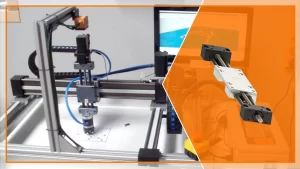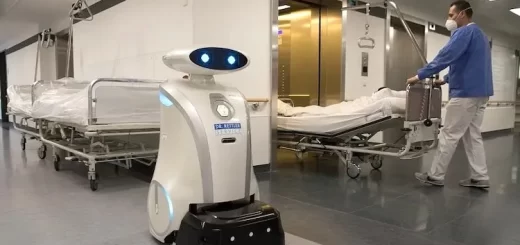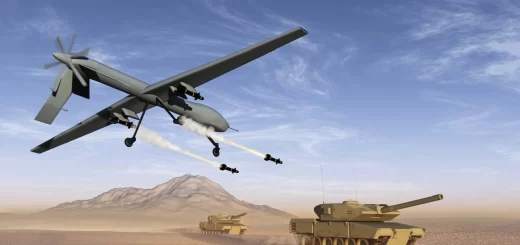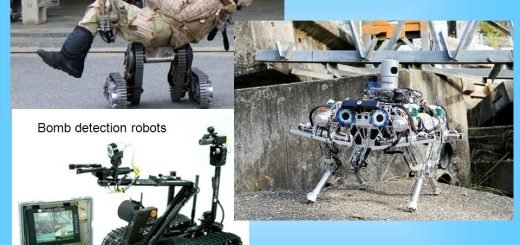Cartesian robot review, advantages, disadvantages and What can Cartesian robots do?
In assembly lines, Cartesian robots move parts from one location to another with high repeatability, ensuring consistent product quality. Similar to CNC machining, cartesian robots guide plasma torches or lasers for precise cutting of sheet metal, plastic, or other materials.
What are Cartesian robots?
The cartesian robot is also known as a linear robot, It is an industrial robot with several linear axes that move in straight lines. These axes are at right angles (90 degrees) to each other, just like the X, Y, and Z axes in a cartesian coordinate system. This design makes them easy to program and control because their movements are very straightforward.
Cartesian robots are a versatile type of robot that can be used in a wide variety of applications where precise and repeatable motion is required. Cartesian robots are a reliable solution for a wide range of industrial automation tasks. Their linear motions make them easier to program and maintain compared to robots with rotary axes. Linear motors can move quickly along straight paths.
Cartesian robots are a great choice for tasks that prioritize precision, speed, and cost-effectiveness within a defined work area. Their simple design and programmability make them user-friendly, while their scalability allows for adaptation to various needs.
However, their limited workspace and lack of omnidirectional movement should be considered when choosing the right robot for your application. The simpler design translates to a lower initial investment compared to some complex robotic systems.
Features of Cartesian robots
- Linear Axes: They use sliding joints instead of rotary joints, allowing for precise movement along a straight line.
- Right-angled Axes: The axes are usually perpendicular to each other, simplifying programming and control.
- High Precision: Their design can lead to very accurate positioning and repeatability.
- Simple Programming: Because of their straightforward movements, cartesian robots are easier to program than other types of robots.
Common applications of cartesian robots
- Pick and place: Cartesian robots can pick up objects from one location and place them in another.
- Assembly: Cartesian robots putting together different parts to create a finished product.
- Material handling: Moving materials around a factory or warehouse.
- 3D printing: The extruder in a 3D printer acts like a cartesian robot, moving in X, Y, and Z to deposit material and create a 3D object.
What can cartesian robots do?
Cartesian robots, with their precise movements along the X, Y, and Z axes, are useful for tasks that require accuracy and repeatability.
- In assembly lines, cartesian robots excel at precisely picking up components and placing them at designated locations.
- They move materials around a workspace, loading and unloading machines or sorting items for further processing in a warehouse. They can handle various materials, from delicate electronics to heavy objects.
- The controlled movements of cartesian robots are ideal for guiding cutting tools in CNC machines or extruders in 3D printers, ensuring the precise creation of desired shapes. These robots precisely move cutting tools like drills, lasers, or plasma cutters following a CNC program, creating intricate designs on different materials.
- Similarly, the high precision of cartesian robots allows them to guide plasma torches or lasers for clean and accurate cutting of materials.
- Their ability to move along specific points makes them suitable for automated inspection systems, where parts or products must be examined from various angles.
- Beyond industrial settings, cartesian robots can be found in applications like food and beverage production, packaging lines, and theatrical stage automation.
- Cartesian robots accurately position the print head along the X, Y, and Z axes, depositing material layer by layer to create 3D objects.
- With a router tool attached, they can carve intricate designs or patterns on wood for furniture making or signage.
- Cartesian robots place delicate electronic components on printed circuit boards during the assembly process.
- Equipped with cameras or sensors, cartesian robots can perform detailed inspections of products for quality control purposes.
Cartesian robots advantages
Cartesian robots are a valuable tool for automating repetitive tasks that require precision and control across various industries.
Cartesian robots are also called linear robots, Their rigid structure with linear movements minimizes wobble, allowing them to position objects very accurately and consistently. They are used for tasks such as assembly line operations or delicate handling of electronics.
Linear motors can accelerate quickly and achieve high speeds along straight paths, making them efficient for repetitive tasks, The linear axes make programming and maintenance easier compared to robots with rotary joints, Which translates to lower costs for setup and upkeep.
The size and power of cartesian robots can be adjusted based on the application. They can handle light to heavy payloads by choosing appropriate motors and gearboxes. Their rigid structure minimizes wobble, leading to high precision in positioning.
Disadvantages of Cartesian robots
Cartesian robots have a rectangular workspace restricted by the length of their linear axes. This can be limiting for tasks requiring a wider range of motion or needing to reach around obstacles.
They require a significant amount of floor space to operate, especially for models with larger work envelopes. This might be a concern for facilities with limited space.
Their linear movements limit their ability to maneuver around objects or navigate complex paths compared to robots with more degrees of freedom, like articulated arms.
You can subscribe to Science Online on YouTube from this link: Science Online
You can download Science Online application on Google Play from this link: Science Online Apps on Google Play
Serial Robots review, advantages, disadvantages and what can serial robots do?
Collaborative robot arm (cobot robots) applications, uses, advantages and disadvantages
Automation in manufacturing uses, advantages and disadvantages
Industrial robot (Auto industry) uses, advantages and disadvantages




